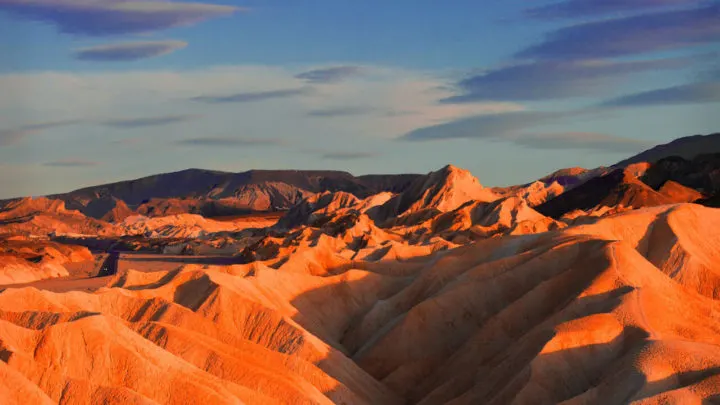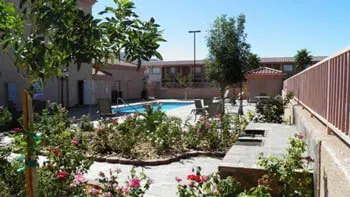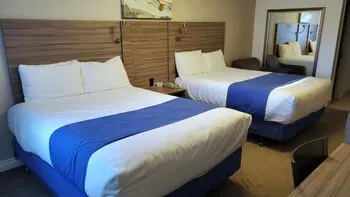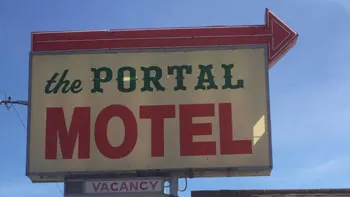Death Valley National Park is full of fascinating geology and iconic landscapes you cannot find anywhere else. What’s more, at over 3,400 acres, Death Valley is the largest national park in California. So, with so much ground to cover and so many exciting sights to see in Death Valley, planning a trip to this other-worldly destination is essential so you can make the most of it.
Regardless of how long you are visiting, a well-thought-out Death Valley itinerary is enough to make the most of your time in the ‘land of the extremes.’ To save you time, we’ve used our knowledge and expertise of the park to break down exactly what to do in Death Valley. So read on to discover how to spend your time here for one to three days.
But first: Let me just point out that there are more California national park guides & tips where this one came from including a detailed Death Valley travel guide!
One Day in Death Valley
If you only have time for a Death Valley day trip, fear not, as you can still see the most famous sights and attractions. Arrive early and prepare for a fun-filled day of excitement and wonder.
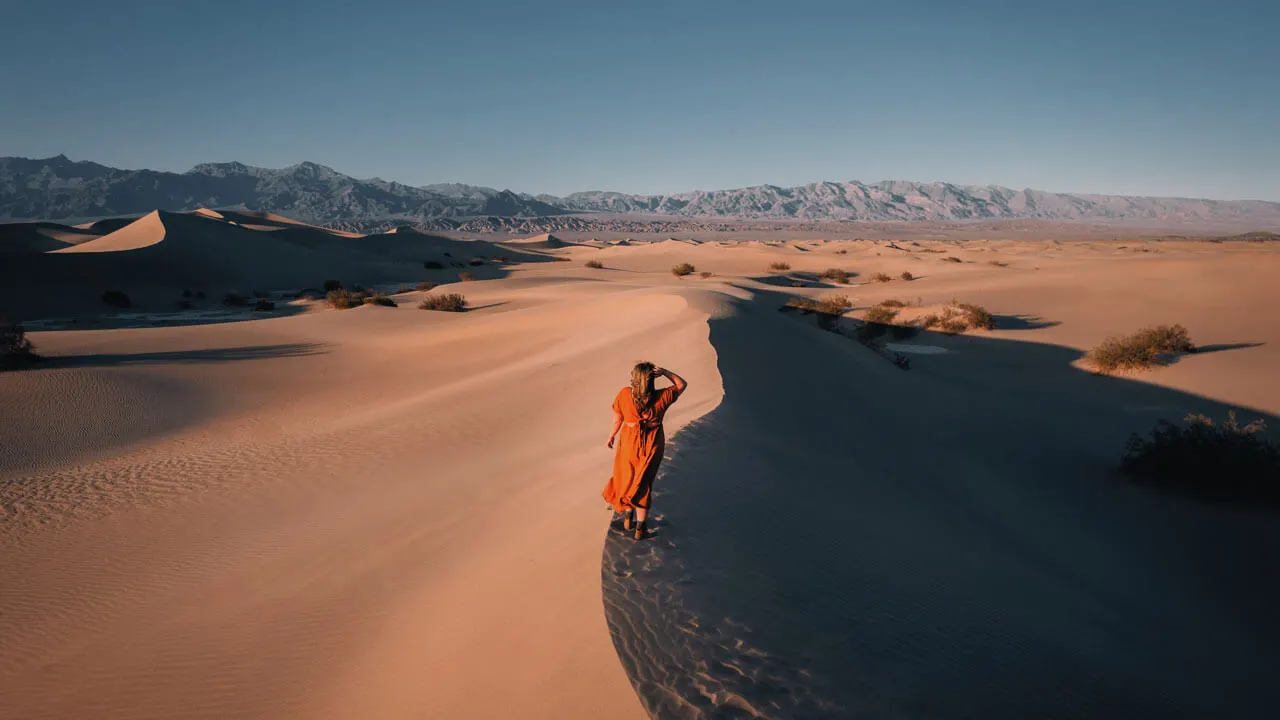
Mesquite Flat Sand Dunes
Enter the park coming from the east along Daylight Pass Road. After passing the Death Valley National Park sign and the information center, you’ll reach Scotty’s Castle Road. Turn left here, then right, and follow the road until you arrive at Mesquite Flat Sand Dunes.
These photogenic sand dunes make one of the most impressive landscapes in Death Valley. There is something special about arriving here early in the morning when the ambiance is still peaceful, and you can see the sun rising over the mountain backdrop.
We also recommend arriving early as the dunes are one of the most visited Death Valley attractions as it is a famous movie set location. Even so, as the dunes are so vast, you can walk out and find your own private spot if it is crowded.
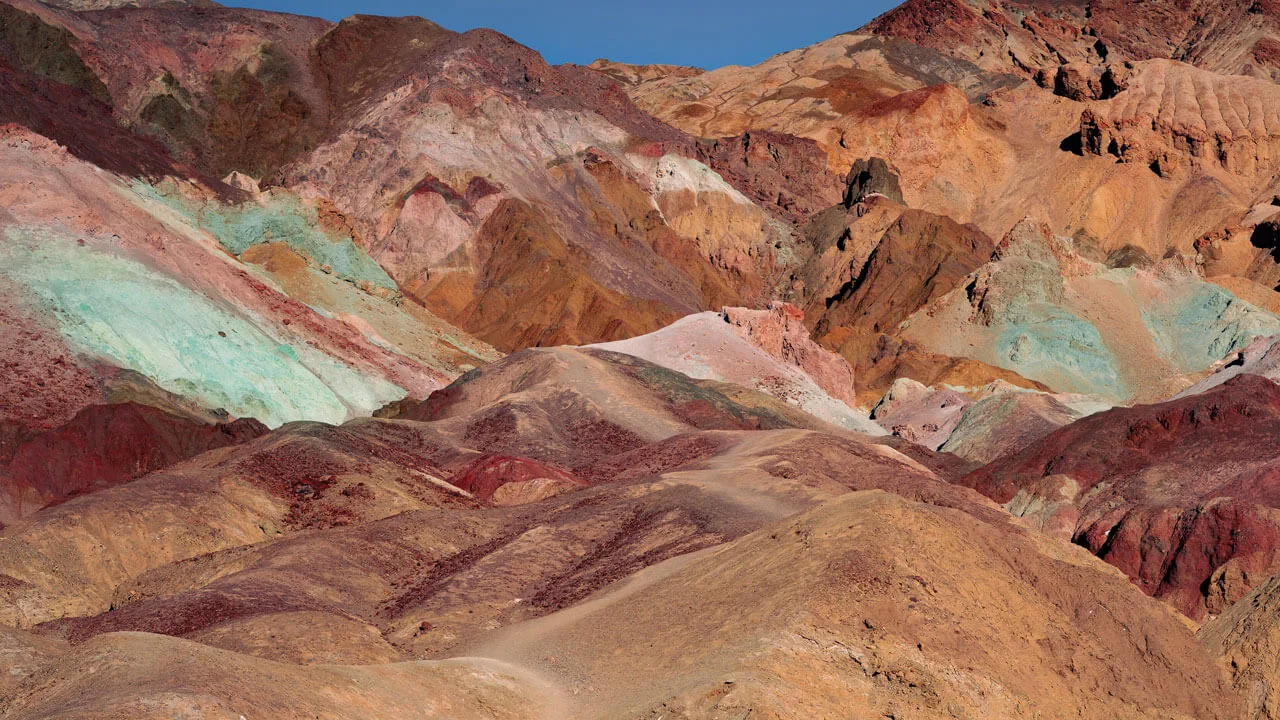
Artist’s Drive and Artist’s Palette
From Mesquite Flat Sand Dunes, go back the way you came, then follow the road south past Beatty Junction and Furnace Creek. At the fork in the street, go right down Badwater Road to arrive at the starting point for the scenic 9-mile (14.4 km) Artist’s Drive.
This beautiful driving route displays the park’s most unique and colorful landscapes, such as Artist’s Palette. The mountain walls here are vivid colors of pink, aqua, and purple, resulting from the oxidation of metals within the soil. The whole area is geologically fascinating as it shows the effects of chemical weathering and hydrothermal alteration.
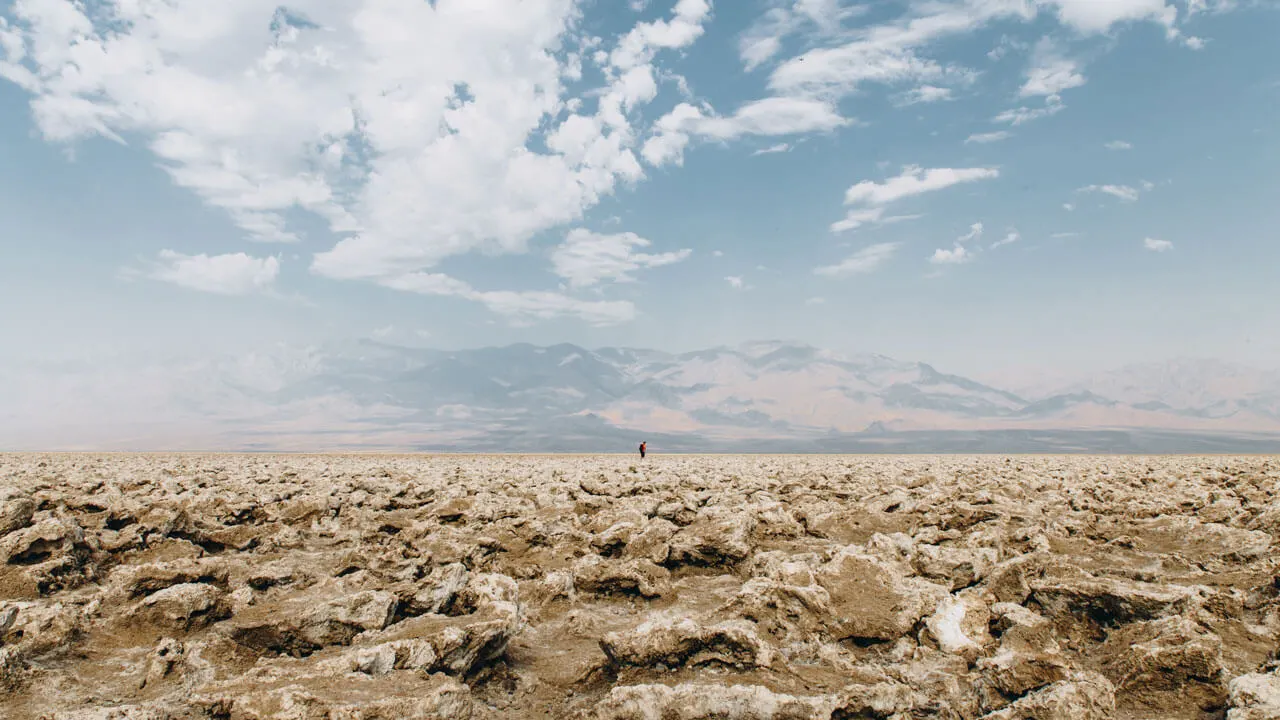
Devil’s Golf Course
Despite what the name suggests, you won’t be playing any rounds of golf at your next Death Valley sight. Devil’s Golf Course is a large salt pan with unique pointy and lumpy formations. These salt flats gradually appeared from years of mineral corrosion, and the intriguing sight draws in tourists all year round.
A word of warning, these crystals are sharper than you would expect and can cut through your shoes and skin should you tread on them. However, you don’t need to walk over them to admire them up close as a dirt road passes through, giving safe passage. You’ll find Devil’s Golf Course on Badwater Road shortly after finishing Artist’s Drive.
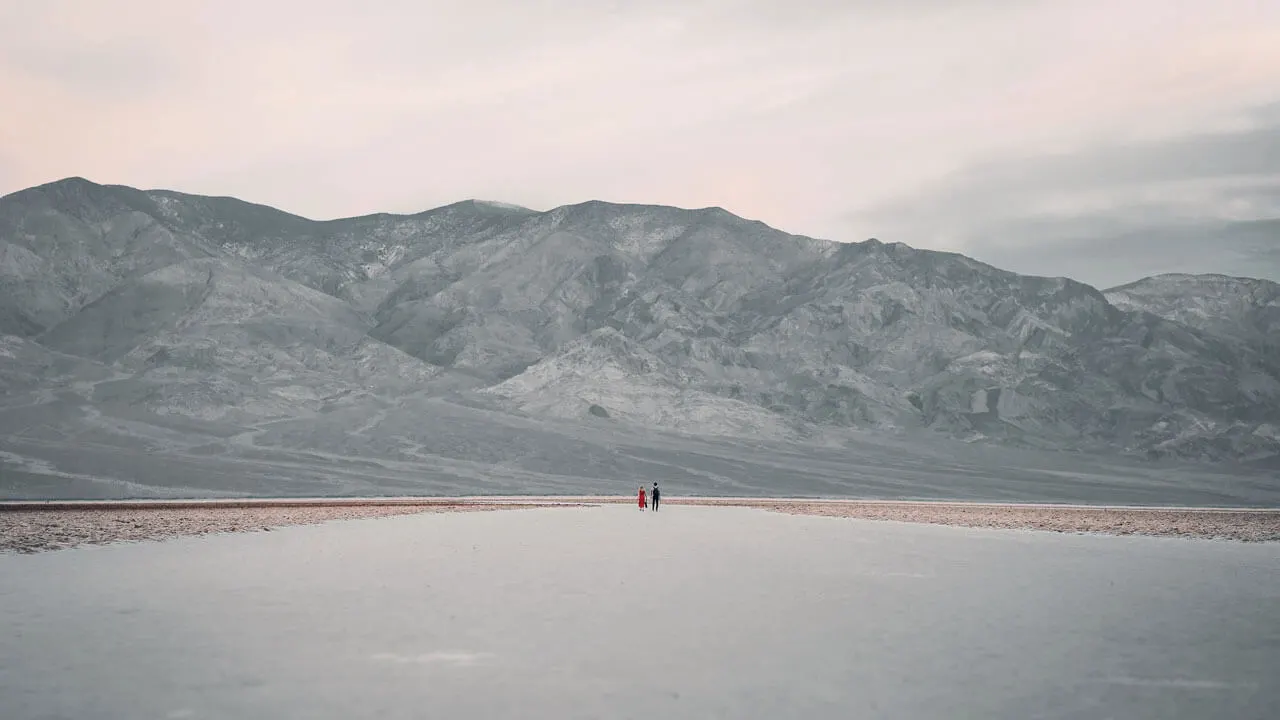
Badwater Basin
Next to Devil’s Golf Course is another famous Death Valley sight, Badwater Basin. What makes it so popular is that this basin descends to 282 feet (85 meters), which is the lowest elevation you can find in North America.
The smooth salt flats usually have a thin sheet of water, so you can walk over these ones without any concern of injury! Although you can walk out as far as you like here, for time-keeping, we recommend just taking the 1 mile (1.6 km) boardwalk trail to the basin and back.
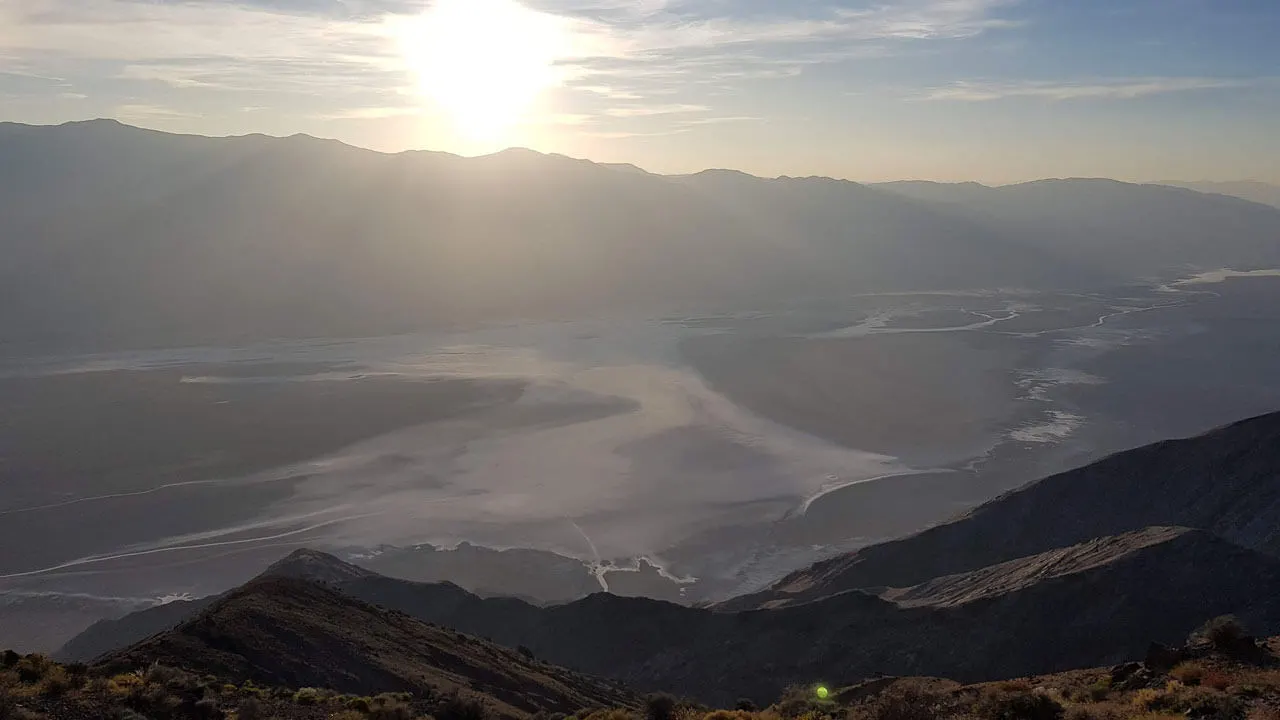
Dante’s View
Once you return back up from Badwater Basin, you should still have about an hour before the sun starts to go down. This gives you enough time to drive up to Dante’s View, arguably the best viewpoint and sunset spot in the park. It will take around 45 minutes to reach it from your current position, but you can drive all the way up.
From Dante’s Viewpoint, you’ll see a totally different perspective of where you have just been as it overlooks Badwater Basin. If you have time, you can also wander down some of the short trails to see views of different parts of the park.
Two Days in Death Valley
Spending two days in the park will allow you to see the top sights you did not have time for on day one. You’ll also have time for some hiking and horseback riding!
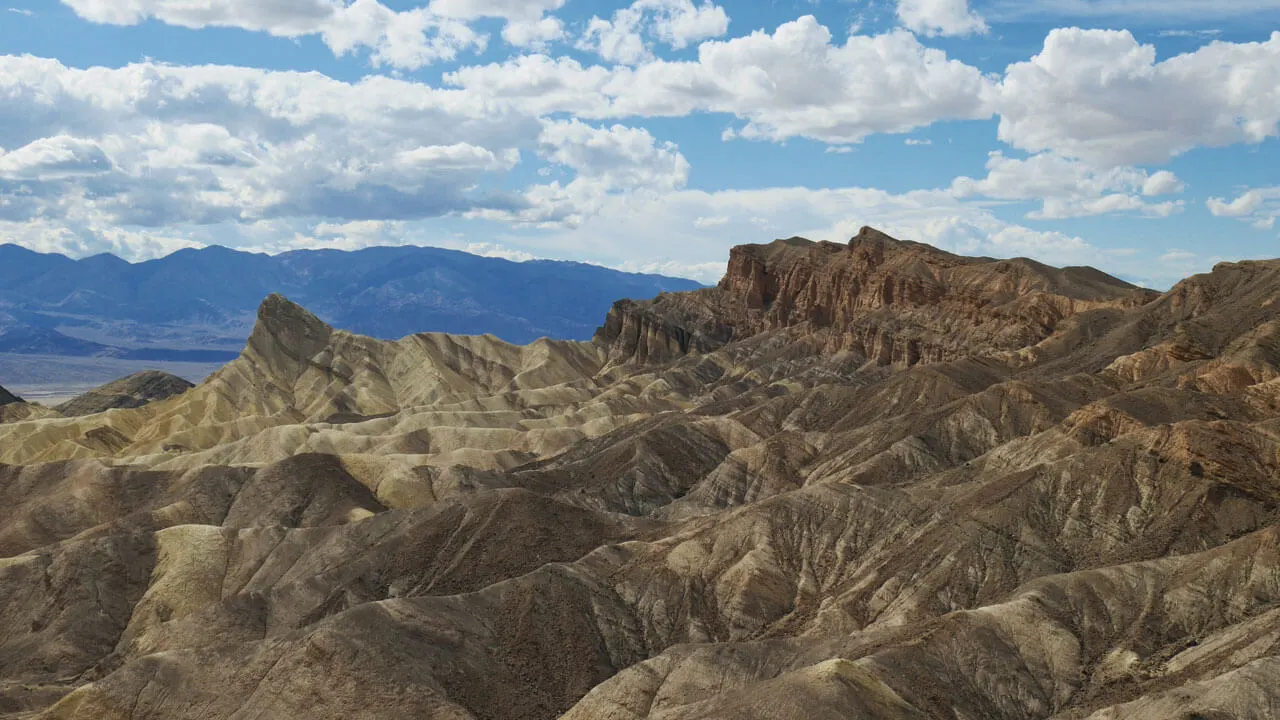
Zabriskie Point
Wake up early to experience one of the best sunrises of your life! Zabriskie Point is a short drive south of Furnace Creek, so bring your breakfast and arrive here shortly after 6am. You’ll be pleased to hear that it isn’t a long walk to the viewpoint, just 0.6 miles (1 km) along a flat, paved trail.
Not only are the views of the park incredible, but the sun also rises over the peaks turning the sky into warm shades of pink and red, creating a picture-perfect moment. What’s more, as most visitors come later in the day, Zabriskie Point is immensely serene at this time of the morning.
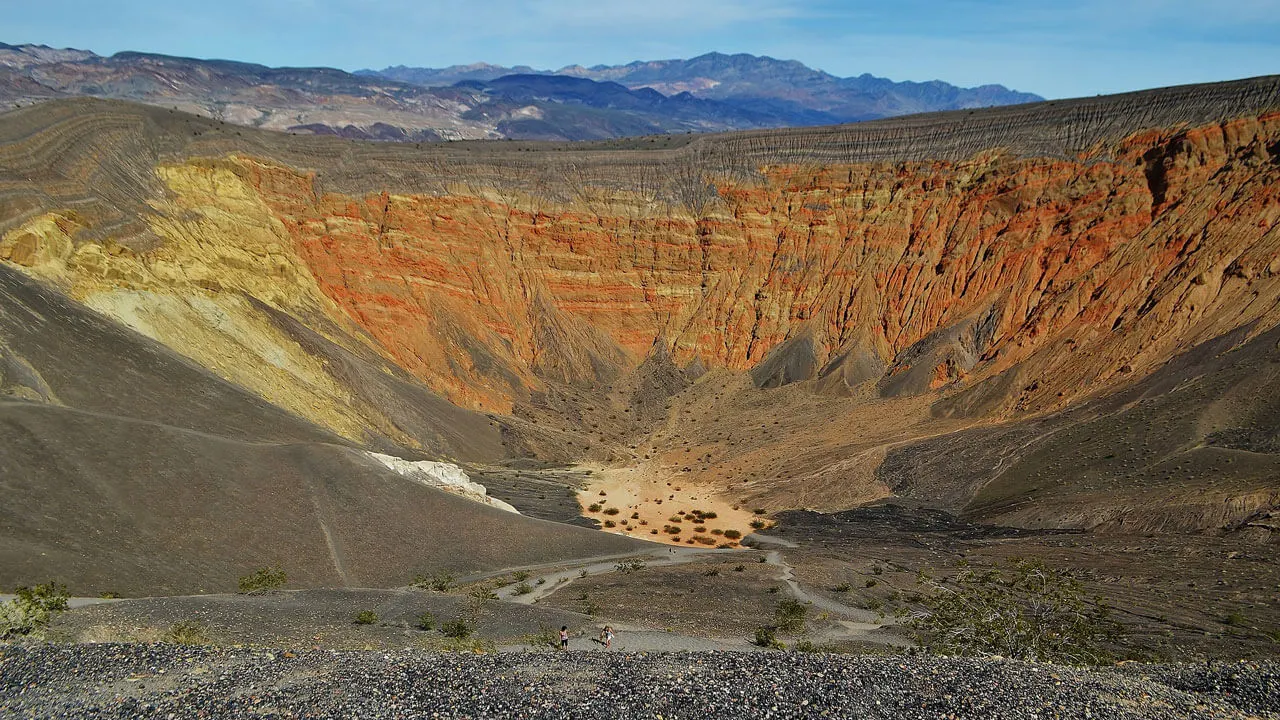
Ubehebe Crater
No Death Valley trip is complete without visiting the enormous 2100-year-old volcanic crater. You’ll find Ubehebe Crater in the north of the park and over an hour’s drive from Zabriskie Point. Because it’s off-the-beaten-path, most people on a Death Valley day trip miss out on this incredible sight.
The volcanic eruption formed a 600-foot (182 meters) deep hole, and the effects of the historical event can be seen as far as 15 miles (24 km), with debris covering the land. You can walk down to the bottom of the crater, which isn’t too tricky. However, walking back up is pretty strenuous.
An alternative way to explore it is to walk around the rim. The route is approximately 2 miles (3 km). Along with seeing a unique perspective of the crater from above, you’ll also pass by smaller ones, like Little Hebe.
Golden Canyon
From here, head back down to Furnace Creek, where you can stop to grab some lunch to refuel for your afternoon hike in Golden Canyon. The Golden Canyon hike is a 4-mile route to the magnificent Red Cathedral.
The trail begins by passing through the colorful walls of Golden Canyon with marvelous views of the Manly Beacon peak. Towards the end of the course, the canyon narrows, and you’ll need to scramble over a few boulders before it opens out to the warm red oxidized rocks of Red Cathedral. The hike takes between 2 to 2.5 hours to complete and is a fair challenge.
Sunset Horseback Riding in Furnace Creek
After that challenging hike, end the second day of your time in Death Valley pleasantly by taking a sunset horseback ride through the park. Give your feet a rest as you hop onto one of the elegant horses at Furnace Creek Stables and cross through the desert, admiring the changing colors of the sky.
Three Days in Death Valley
A three-day Death Valley Itinerary will give you a much more varied experience. Use this additional day to hike some more iconic areas in the morning and then spend the afternoon exploring the surrounding areas of the national park.
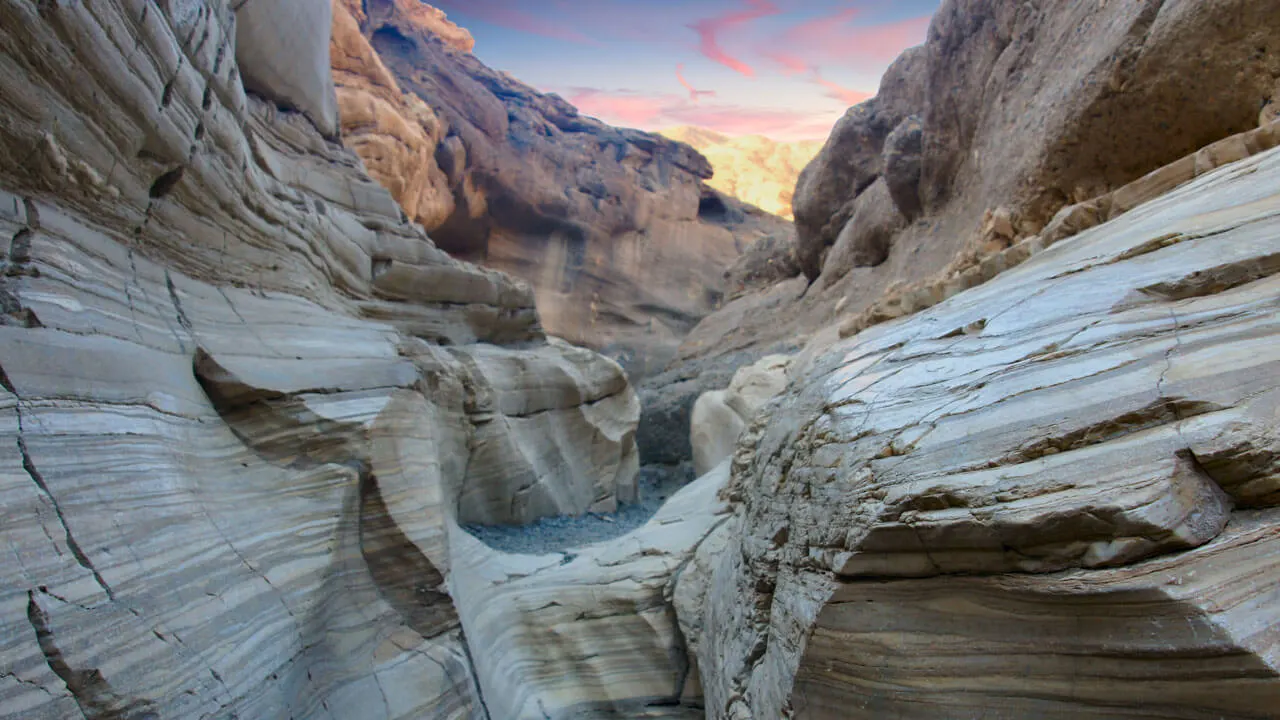
Mosaic Canyon
Begin your third day with some more hiking in Death Valley. Mosaic Canyon is located in Stovepipe Wells and has a fun and scenic 3.3 mile (5.3 km) trail that will take you 2 to 3 hours to complete. So, make sure you have a hearty breakfast before setting off!
Mosaic Canyon is another area with fascinating geology, with polished marble walls containing multiple layers and shades. As well as having a mesmerizing appearance, you’ll find this trek super fun as the width of the canyon walls constantly changes. As a result, some parts of the route are open, whereas, in other areas, you’ll find yourself walking through narrow tunnels and scrambling over rocks.
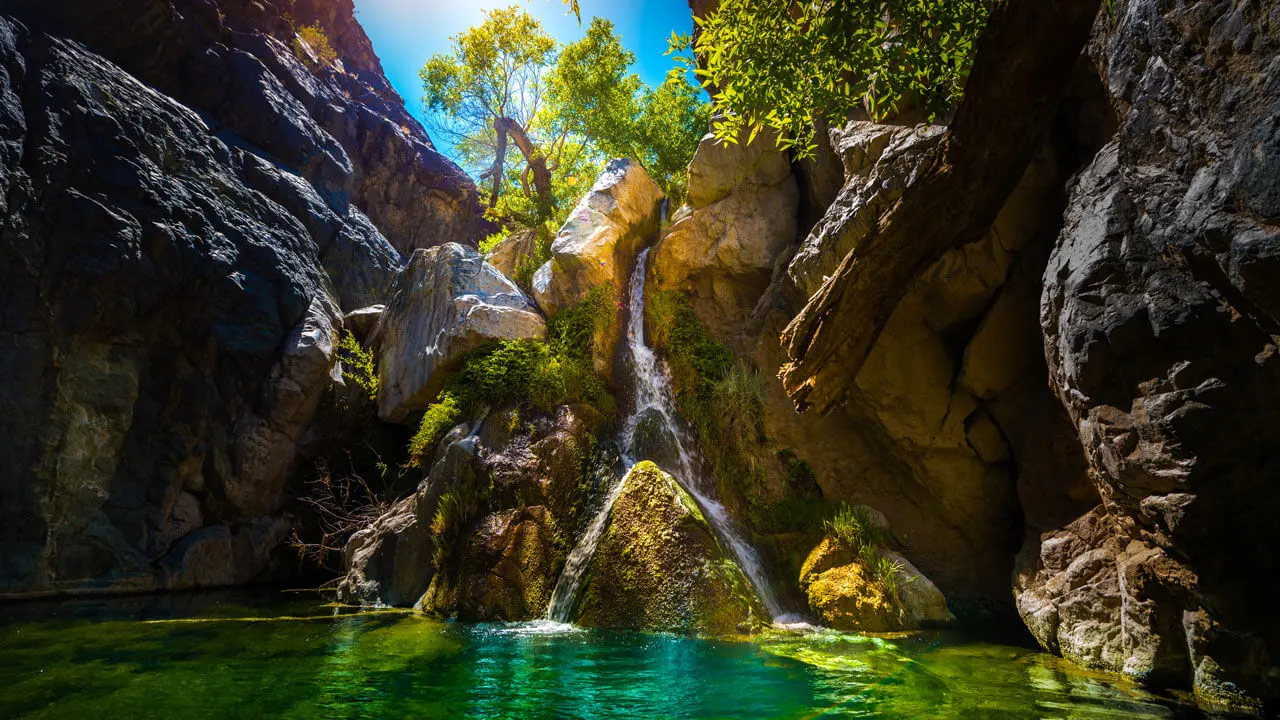
Darwin Falls
End your morning with another scenic hike. From Mosaic Canyon, drive for one hour to the park’s western edge until you arrive at Darwin Falls. Of course, an all-year-round waterfall is not something you would expect to see in an area so hot and dry as Death Valley, but what can we say? This national park is full of surprises!
It’s a short 2 mile (3.2 km) walk to the falls with minimal elevation, which takes around one hour to complete. However, if you have brought with you a picnic, you’ll find it to be a delightful spot to sit and enjoy your lunch. Plus, both the shaded areas and the refreshing waters will prove extremely welcoming if it’s a hot day.
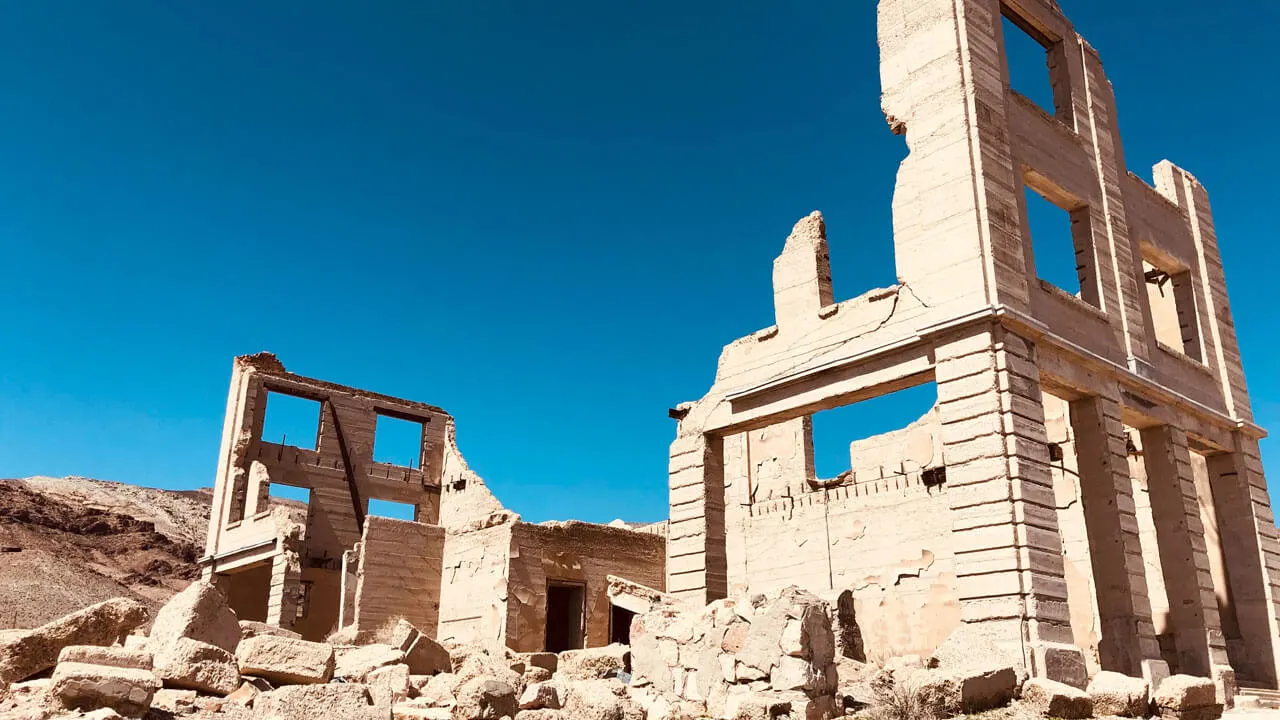
Rhyolite Ghost Town
Once you tire of the national park, drive to the unique nearby attraction, Rhyolite Ghost Town. Just 10 minutes from the park entrance, you’ll find the ruins of a 1905 gold-mining town, which now serves as a historic site with art installations for visitors to stroll around. There are many eerie spots to discover here, such as the cemetery, the train depot, and the famous ghost sculptures.
Area 51 Alien Center
Your last stop on the way home is a 40-minute drive south from Rhyolite Ghost Town. From spooky to damn right weird, here you will find the Area 51 Alien Center. The unusual venue is an alien-themed souvenir shop with plenty of quirky photo opportunities.
Along with being heaven for sci-fi fanatics, the center doubles up as a roadside diner. So after a browse around the alien mini-mart, you can tuck into a hearty meal before heading back to your hotel or driving home.
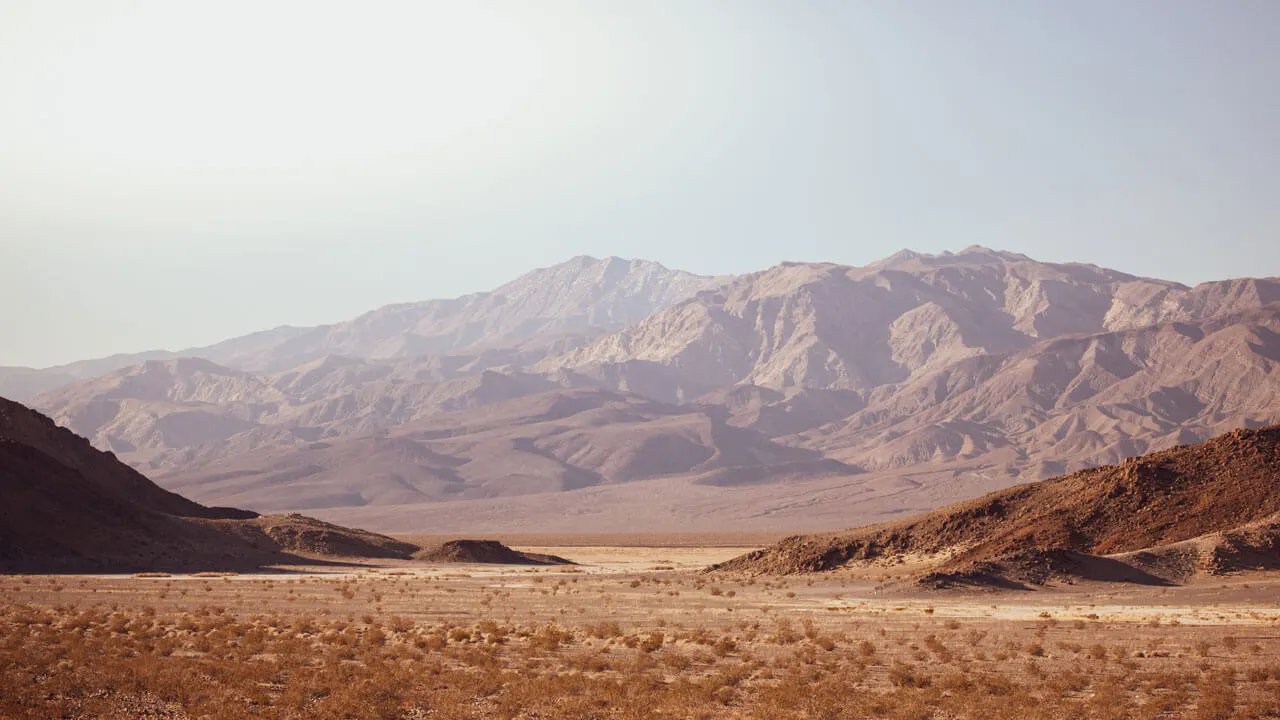
Where to Stay in Death Valley
The few inns within the national park are an excellent choice if you want to maximize your time there. However, depending on the time of year you are visiting, you might find these motels are fully booked.
Luckily, the small town of Beatty is just a 10-minute drive from the entrance and is one of the best places to stay near Death Valley. There is a broader choice of accommodation here, and rates are cheaper, too. Plus, there are a few diners and cafes in town where you can enjoy a hearty breakfast or evening meal. Here are three fab places to stay in Beatty.
Luxury: Death Valley Inn has an outdoor pool, hot tub, and BBQ facilities, making it an ideal place to unwind after a busy day in the park. There is also a self-service laundrette on-site, so you don’t have to take your dusty clothes home.
Mid-Range: Exchange Club Motel is just a short walk from the shops and restaurants in town. The rooms are simple yet modern and have all the amenities you’ll need, like a coffee machine, fridge, and microwave.
Budget: El Portal Motel is the top choice for value for money. The motel is centrally located and boasts excellent customer service and an outdoor pool to refresh in when you get back from the park.

